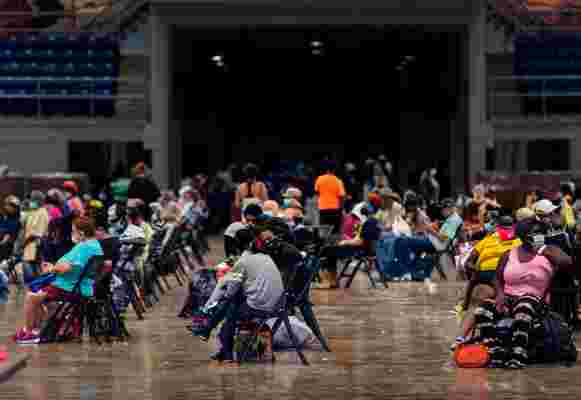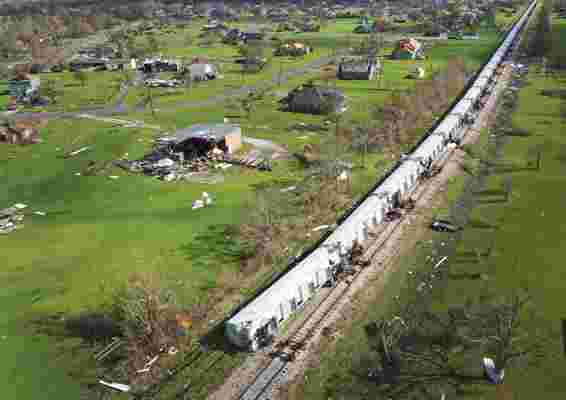How the Design of Natural-Disaster Relief Is Complicated by the Pandemic
Tropical storm season and the ongoing California wildfires have served as a reminder that COVID-19 isn’t the only disaster in town. But like the pandemic has done for most everything else, it’s made relief efforts much harder and more complicated. Some of the biggest challenges relate to the physical world: When rescuing people and pets, where do you put them that will keep them safe not only from the disaster but also from each other? And second, when it’s harder to get to people’s homes or buildings, how can experts evaluate when it’s okay to go back inside again?
Every storm is different, says Brooklyn architect Illya Azaroff , who has worked in disaster mitigation, resilience planning strategies, and better building design for more than 25 years. Relief efforts typically begin with damage assessment: which buildings people can get back into and which they need to stay away from. “Some qualifications after a disaster are that the building has maintained enclosure, that the water supply is not interrupted, and that it appears everything is structurally stable,” says Azaroff. “Now, under COVID, we also have to consider air quality.” In most cases, response teams now assemble and discuss strategies remotely, while field assessments previously conducted in person have been replaced by drone visits and drive-bys. For in-person assessment, there’s a new level of complexity, says Azaroff. “If you’re going to deploy for disaster, you need to know how to protect yourself, and of course remember to social-distance from homeowners and each other,” he says.

People sit in a stadium as they wait to be evacuated before the arrival of Hurricane Laura in Lake Charles, Louisiana, on August 25, 2020, amid the coronavirus pandemic.
Shelters set up to take in displaced homeowners have also been rethought. In some cases, Japanese disaster architect Shigeru Ban ’s system of paper partitions has been mimicked to establish shelter spaces with privacy “masks” between groups of people. In his work, Azaroff has followed the ASHRAE Epidemic Task Force’s Building Readiness Guide to ensure that shelters employ HVAC systems that help mitigate the transmission of COVID-19. Animal response has followed suit: In Lake Charles, Louisiana, the ASPCA set up an emergency shelter for pets displaced by Hurricane Laura out of tents so that first responders, who work within assigned teams, may meet and train outdoors, with entry to care for animals staggered to limit cross-contamination.
The good news, says Azaroff, is that the more experts become skilled at assessing remotely, the faster and better future relief efforts will be. Drone snapshots can help responders respond immediately, and in great detail. “We’ve had all this tech, but were in many ways holding onto practices of the 20th century,” he says. “COVID has forced us to leverage that tech to its full potential. Instead of all of us getting on a plane and burning up the environment, we have the ability to give assessment almost as if we’re there, with 95% effectiveness.”

Assessing damage remotely by drone—as this photo was taken on August 29, 2020, over Lake Charles, Louisiana, after Hurricane Laura made landfall—has become increasingly critical due to the pandemic.
Azaroff also hopes lessons from disaster response under COVID-19 will encourage better building practices across the country, which would then lessen the need to react to disasters. “Simply put, if we’re building better buildings with materials and resources that better respond to human comfort and safety needs, we’ll be better prepared for future disasters,” he says. “For example, if the power is out in the house, it’s still habitable because of the use of natural heat or light.” Wendy Yates, the principal designer at Colorado-based design studio Abigail-Elise , believes clean air filtration systems to manage both outdoor and indoor air quality will soon become the norm. “In my work, I always say you never let any disaster go to waste,” says Azaroff. “To come out of this and truly thrive, we have to remember that what was there before cannot be put back the same way if it did not respond to that disaster.”